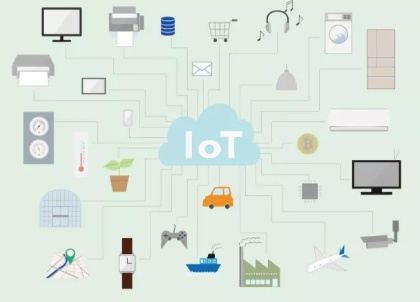AI and ML analytics in IoT enable productivity, efficiency, and effectiveness by transforming raw data into actionable insights using semantics.
The future potential of the Internet of Things (IoT) is limitless. The total installed base of IoT-connected devices worldwide is estimated to grow to nearly 31 billion by 2025. From connected cars, smart cities, smart home devices to connected industrial equipment, a wave of exciting IoT applications is about to emerge, bringing life through intuitive human-computer interaction. Беспроводной модем
These advances in IoT will be accelerated by increased network agility and the ability to automate different use cases. The potential of IoT lies not only in deploying billions of devices, but in harnessing the data from those devices to gain actionable insights. It is predicted that in the next four years, global IoT devices will generate 90ZB of data.
Some technologies inevitably come together. Artificial intelligence (AI) and the Internet of Things are perfect examples of two technologies that complement each other while being closely connected. In a world of rapidly growing IoT applications, connecting and sharing data across vast networks of devices, organizations need analytics.
This is the ability to make quick decisions and uncover deep insights as they continuously learn from vast amounts of IoT data. AI is an essential part of analytics that can help amplify the overall value of IoT. By leveraging deep/machine learning (ML) and artificial intelligence, businesses can predict customer and network needs, automate preventive actions, and tailor products and services based on derived behavioral insights.
A key aspect of autonomous systems is better decision making and providing automatic intelligent behavior for industrial machines, smart cities and devices working in any environment. IoT sensors digitize the physical world, and data is produced at different speeds—sometimes as raw as video format, or as structured as RFID data. To process this data at the edge, whether raw or structured, requires deep machine learning models.
For example, smart city projects require the installation of high-definition traffic cameras for better law enforcement. The cameras are required to capture speed, registration numbers and flag illegal driving activity. Sensors need to statistically compress data at the source, extract information from noise to send relevant information centrally, and help provide local insights about devices in the environment.
While data is ingested at varying rates, it needs to be provided with accurate context. Also, how quickly these events need to be processed and how much needs to be stored in order to gain actionable insights is also critical. Such systems require historical data to improve insight and provide better decision-making. While data is captured in different layers and shapes, they need to be fused together in near real time for optimal insight.
This is where machine learning and deep learning tools help generate useful insights. These tools not only guide sensors on what to capture, but also fuse layers together to share reports with authorities in real time. AI, machine learning and analytics can help optimize the customer lifecycle (in this case law enforcement) and allow them to effectively utilize all resources to enhance their campaigns. Insights from data drive the customer lifecycle, create plans to use the right resources and prevent risks. AC-DC двойной
AI and ML analytics in IoT enable productivity, efficiency and effectiveness by transforming raw data into actionable insights using semantics. It delivers value by leveraging the challenges posed by the volume and variety of big data to provide actionable information and improved decision making. The convergence of artificial intelligence and machine learning is paving the way for advances in efficiency, accuracy, productivity, and overall cost savings for resource-constrained IoT devices. When AI and ML analytics algorithms work in tandem with IoT, organizations can use it to achieve better overall communication, real-time demand calculations, and greater control over data.
Common challenges facing organizations today are the application, accessibility and analysis of IoT data. While most use AI and ML to run some form of statistical analysis, leaders are using it to proactively and predict events for future insights. By leveraging the vast amount of data that is continuously flowing into their internal systems, such AI-enabled IoT systems can automatically and continuously provide these organizations with relevant insights.
These technologies are enabling higher levels of automation and productivity at ever-decreasing costs. As consumers, businesses, and governments begin to control the Internet of Things in various ways, optimizing data through analytics will change the way we live and make better choices.
Why artificial intelligence and machine learning are closely aligned with the IoT

5 min read
16 February 2023
In case you have found a mistake in the text, please send a message to the author by selecting the mistake and pressing Ctrl-Enter.
Беспроводной последовательный модуль lora 17
Ebyte — национальное высокотехнологичное предприятие, специализирующееся на исследованиях и разработках беспроводных модулей и промышленных IoT-терминалов. Неза...

No comments yet